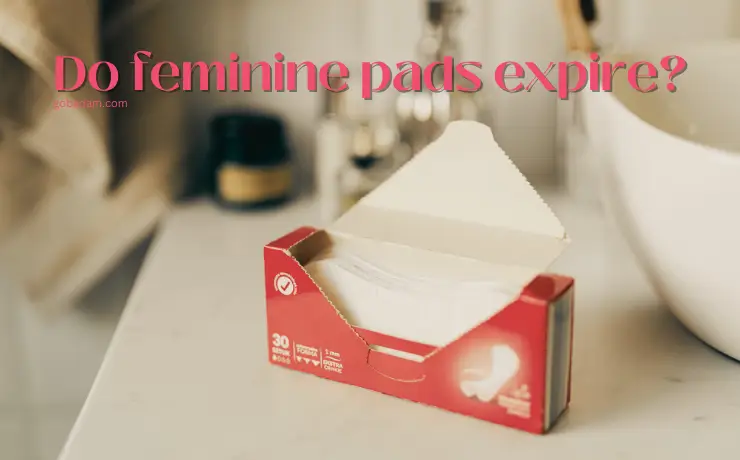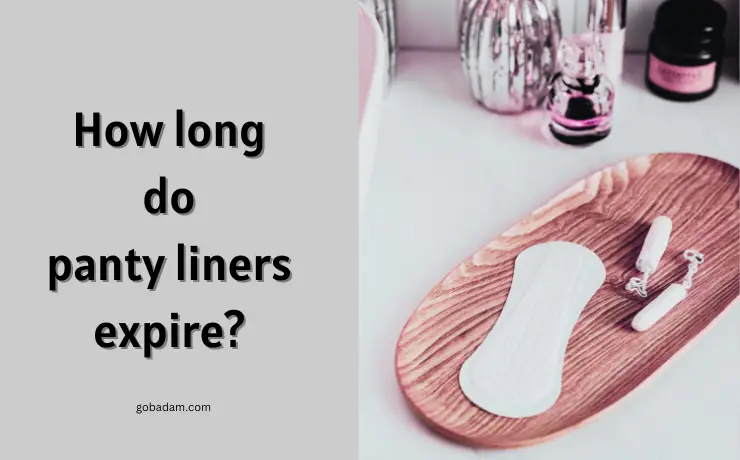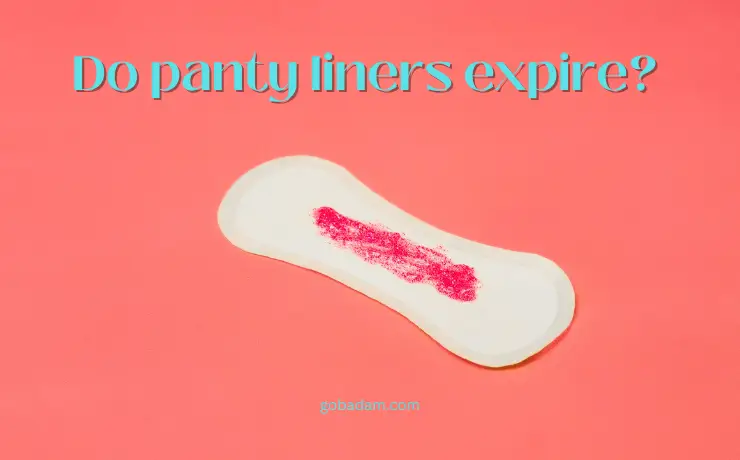In today’s fast-paced consumer world, we often find ourselves scrutinizing the expiration dates on everything from the milk in our fridge to the medicine in our cabinets. But have you ever stopped to consider the shelf life of your personal care items, like panty liners?
It may sound surprising, but it’s a question worth asking: Do panty liners expire? In this blog post, we delve deep into the lifespan of these daily essentials, uncovering the factors that affect their integrity and offering guidance on when it might be time to toss them out. Join us as we unravel the mystery behind the longevity of panty liners.
Do panty liners expire? (Do feminine pads expire?)
Panty liners typically do not have an expiration date in the same way that food or medicine might. However, the effectiveness of the adhesive and the integrity of the materials can degrade over time, particularly if they are stored in a humid or otherwise less-than-ideal environment.
For instance, excessive moisture might cause them to become less sticky, while high temperatures could cause the materials to break down.
Do pad liners expire? Generally, if your panty liners look, smell, and feel as they should, they are likely still good to use. If they have been stored in a sealed package in a cool, dry place, they can last for several years.
However, if you notice any signs of deterioration—like an odd smell, discoloration, or compromised integrity—you should discard them.
It’s always a good idea to inspect any personal care product before use, especially if it has been stored for a long time or under questionable conditions. If you are in doubt, replacing them is the safest course of action.
SEE OFFER 👉🏻 panty liners for women

How long do panty liners expire?
Panty liners generally don’t come with an expiration date, but that doesn’t mean they’ll last forever. While they don’t expire in the way food or medicine does, the effectiveness and integrity of the product can degrade over time depending on storage conditions. In general, if stored in a cool, dry place and kept in their original packaging, panty liners can last for several years.
Factors that could cause your panty liners to degrade include:
Humidity
Excessive moisture can affect the adhesive and can also encourage the growth of mold or bacteria. Especially when the package is open or if the unused product is kept around randomly, contact with bacteria is inevitable.
Temperature
Extreme temperatures could break down the materials, affecting both comfort and functionality. Heat is a factor that triggers bacteria and undesirable formations.
Physical Damage
If the packaging has been compromised or the liners have been crushed or otherwise damaged, their effectiveness could be reduced.
Contact With Other Products
Conditions such as exposure of the product to the air or leaving it open may not only invite the formation of bacteria, but may also cause interactions with other cosmetic products. These interactions can also lead to undesirable consequences such as deterioration.
If you notice that the panty liners have an unusual smell, discoloration, or if the adhesive is no longer effective, it’s probably time to discard them.
How long do pads expire? While there isn’t a set “expiration date,” it’s generally a good idea to inspect them before use, especially if they’ve been stored for a long time. When in doubt, it’s always safer to replace them.
PURCHASE NEW 👉🏻panty liners thin

What happens if you use expired pads?
While menstrual pads and panty liners don’t typically come with an official expiration date, using products that are very old or have been stored under poor conditions could pose some concerns. Here are some possible risks or issues:
Reduced Effectiveness: Over time, the adhesive on the pad may lose its effectiveness, causing the pad to slip or move around, which could lead to leaks.
Material Breakdown: The materials used in pads, like cotton or other absorbents, can degrade over time, especially under poor storage conditions. This can affect their absorbency and comfort.
Contamination: If the packaging has been compromised or if the pads have been stored in a humid or dirty environment, there is a risk of bacterial or fungal growth. While rare, this could lead to skin irritation or infection.
Irritation and Allergic Reactions: Older materials may break down and cause skin irritation or even allergic reactions.
Unpleasant Odor: Aged or deteriorated materials may develop an unpleasant smell, which can be uncomfortable to wear.
Discoloration: Over time, the materials may discolor, which although not necessarily a health risk, can be off-putting.
Always inspect any pad or panty liner before use. If you notice that the product has an odd smell, shows signs of material breakdown, or appears to be discolored or otherwise compromised, it’s best to discard it and use a new one.
It’s always better to prioritize your health and comfort by using products that are in good condition.

Panty Liners Shelf Life
Panty liners, like other personal care items, have a shelf life that’s influenced by their storage conditions. While they don’t come with a specified expiration date, their effectiveness and the integrity of their materials can diminish over time.
Ideally, when stored in a cool, dry place and kept sealed in their original packaging, panty liners can retain their quality for several years.
However, exposure to high humidity or extreme temperatures can negatively impact the adhesive and material structure.
As we mentioned above, it’s wise to inspect panty liners for any signs of deterioration, such as discoloration or an unusual odor, before use.
Regularly checking, replacing, and rotating your stock ensures that you’re using products that remain both comfortable and functional.

How to check expiry date on Always pads?
There is a production date or expiry date on the main packaging and usually close to the barcode. If only the production date is written, you can store it for 2-3 years under suitable storage conditions. It is also possible to use unopened and undamaged products for longer periods.
Same method is suitable for Kotex pads expiration date, Sofy pads expiry date, Whisper sanitary pads expiry date and so on.
SEE OFFER 👉🏻panty liners sanitary products
Panty Liners Storage Ideas
Storing panty liners effectively not only helps you keep your bathroom or storage area organized but also ensures that the liners remain in good condition for as long as possible. Here are some storage ideas for panty liners.
Panty liners bathroom storage
Keeping sanitary pads and panty liners in homes and bathrooms is even easier than it seems, considering the hygiene conditions.
If you are going to store it in a clean and dry place at home, it is not necessary to choose individually packaged panty liners. By choosing products lined up in a whole package, you can save economically while fulfilling your environmental responsibility.
Just be careful when storing it in the bathroom with other cosmetics, such as retinol, castor oil, vitamin c, foot peel mask, and sheet masks. You can preserve your sanitary products in safer spaces such as near baby diapers. Do not store them together with laundry pods.
Here are some panty liners storage tips that might inspire you:
Drawer Organizers: Use small drawer organizers in bathroom or bedroom drawers to keep panty liners neatly separated from other items.
Plastic Containers: Store them in a plastic container with a lid to keep moisture and dust away.
Cloth Bags: Use small cloth bags to store liners. These are especially useful if you have limited space, as you can hang the bags on hooks.
Sanitary Boxes: Use a small wicker or plastic basket dedicated solely to storing panty liners and other feminine hygiene products.
Over-the-Door Organizers: Utilize over-the-door hanging organizers with pockets to store panty liners and other toiletries.
Medicine Cabinet: If you have room, storing them in your medicine cabinet can keep them at easy reach and away from moisture.
Vanity Units: If your bathroom vanity has room, dedicate a small drawer or section for panty liners.

Panty Liners Travel Storage
Considering the hygiene factor, it would be a wiser choice to choose individually packaged products for travel. Keeping them in small bags or storage sleeves that you can use easily is another hygienic aspect that you can pay attention to.
Here are travel-friendly panty liners and practical panty liners travel storage cases.
Ziplock Bags: To keep them clean and easily accessible, put a few liners in Ziplock bags when traveling. You can put your panty liners travel size into a significant liner, so you can find and access them easily.
Panty liners travel pack: Include a few liners in your toiletry kit for emergencies.
Panty liners travel bag: Use a small cosmetic bag to store a combination of liners, pads, and tampons.
Compact Containers: Small, flat containers can fit easily in a purse or suitcase and protect liners from getting squished. Panty liners travel cases can also be used to preserve other cosmetic and personal care products.
SEE OFFER 👉🏻 travel panty liners for women
Panty Liners On the Go
In my opinion, there’s a need for extra protection for the panty liners you might carry in your bag against things they might come into contact with. In our bags, where we stuff everything from coins to perfume, dust and dirt are inevitably formed.
I believe the more hygienic we can keep panty liners, which will come into contact with our private areas, the better. Here are a few case suggestions that might be useful for this purpose.
Small Pouch: Carry a small, discreet pouch in your purse or backpack.
Pocket Wallets: Some liners come in individual pocket-sized packs; these are great for on-the-go needs.
Car Storage: Keep a small container or Ziplock bag of liners in your car’s glove compartment for emergencies.
SEE OFFER 👉🏻organic panty liners
Panty Liners Creative Storage
If you are looking for different, creative, or upcycled products, these may also interest you.
Mason Jars: For a decorative touch, large mason jars can be used for storage.
Upcycled Boxes: Old smartphone boxes or other small sturdy boxes can be repurposed to store liners.
By finding the right storage solutions, you can ensure that your panty liners remain in optimal condition for whenever you need them.
Frequently Asked Questions About Do Panty Liners Expire
Here are the top questions about do panty liners expire and more. If you have any comments or questions, you can consult the brand of the product you purchased.
Is it okay to use expired panty liner?
If you’re in doubt about the quality of an old or “expired” panty liner, the best course of action is to discard it and use a new one. Always inspect any panty liner for signs of wear, tear, or contamination before use, especially if it has been stored for a long time or you’re unsure of its age. Your comfort and health should be the primary concerns.
How often should I change my panty liner?
The frequency with which you should change your panty liner can vary based on your level of activity and personal needs, but a general guideline is to change it every 4 to 6 hours. Failing to change it within this time frame can lead to discomfort, possible odor, and an increased risk of bacterial growth or skin irritation.
What to do with expired sanitary pads?
Here are a few ideas for what to do with expired sanitary pads.
Pet Cleanup: Use old sanitary pads to clean up small messes or absorb spills made by pets.
Plant Liners: Place them at the bottom of plant pots to absorb excess water and prevent soil leakage.
Shoe Inserts: Cut them to fit and use them as temporary insoles for shoes that are causing discomfort.
DIY Draft Stopper: Stitch a series of expired pads into a fabric tube to create a quick draft stopper for doors or windows.
Hand Warmers: Fill them with rice, microwave briefly, and use them as emergency hand warmers in winter months.
Read More…


